Diversity of Organisms
1. Animal Kingdom
Main Features
- All multicellular
- They are eukaryotic - have a nucleus and membrane enclosed organelles
- Animal calls have no cell walls
- All animals are heterotrophic - they cannot produce their own food
- They normally reproduce sexually
Examples
- Human
- Dog
- Zebra
2. Plant Kingdom
- This kingdom includes the mosses, ferns and seed-producing plants
- Seed producing plants can be further sub-divided into flowering and non-flowering
Main Features
- All multicellular
- Cell walls made of cellulose
- Cells often have large vacuoles (store food, water and wastes)
- Eukaryotic - the have a true nucleus and membrane enclosed organelles
- Chloroplasts containing the pigment chlorophyll which enables photosynthesis. All plants are autotrophs
- They reproduce asexually and sexually
Examples
- Mosses
- Ferns
- Trees
- Rose
3. Monera Kingdom
- This kingdom contains about 10,000 identified species of bacteria
- It is estimated that there are many more
- Bacteria were the first organisms
- They are by far the most numerous organisms on the plant
Main Features
- Mainly microscopic and single celled organisms
- Don’t have a membrane enclosed nucleus (Prokaryote)
- They don’t have membrane enclosed organelles such as mitochondria and chloroplasts
Examples
- Salmonella (Food Poisoning)
- Strep Throat
- Tuberculosis (TB)
4. Protista Kingdom
- Contains a wide variety of organisms from large plant-like algae seaweeds to single-celled organisms such as Amoeba
Main Features
- Contains single celled (Amoeba) and simple multicellular organisms (Algae)
- They have a membrane-enclosed nucleus (Eukaryote)
- Some feed by taking in organic substances (they absorb nutrients through the cell wall) (Amoeba)
- Others can produce their own food by photosynthesis (Algae)
Examples
- Amoeba
- Algae
5. Fungi Kingdom
Main Features
- Mainly multicellular
- Eukaryotes (membrane bound nucleus)
- Composed of threads called hyphae
- A Hypha consists of one or more cells surrounded bu a tubular cell wall
- Cell walls are made of a carbohydrate called chitin
- They are unable to make their own food
- Their method of reproduction involves spores
Examples
- Mushrooms
- Mildews
- Moulds
- Yeast
Monera (Bacteria)
- Micro-organisms are tiny organisms which can only be seen using a microscope
- Bacteria and fungi are found in stagnant water, soil, rotten carcass
-
Bacteria are prokaryotes as they have no membrane bound nucleus or membrane bound cell organelles
- The 3 main types of shapes of bacteria are
- Spherical (cocci)
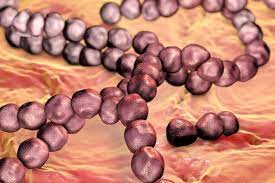
- E.g. Streptococcus (Group A)
- Causes Strep Throat
- Rod (bacillus)
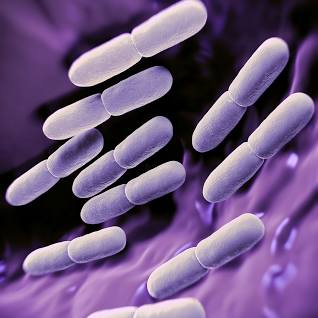
- E.g. Lactobaccllus
- Used in Yoghurt
- Spiral (spirillum)
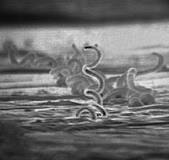
- E.g. Treponema pallidum
- Causes Syphilis
- Spherical (cocci)
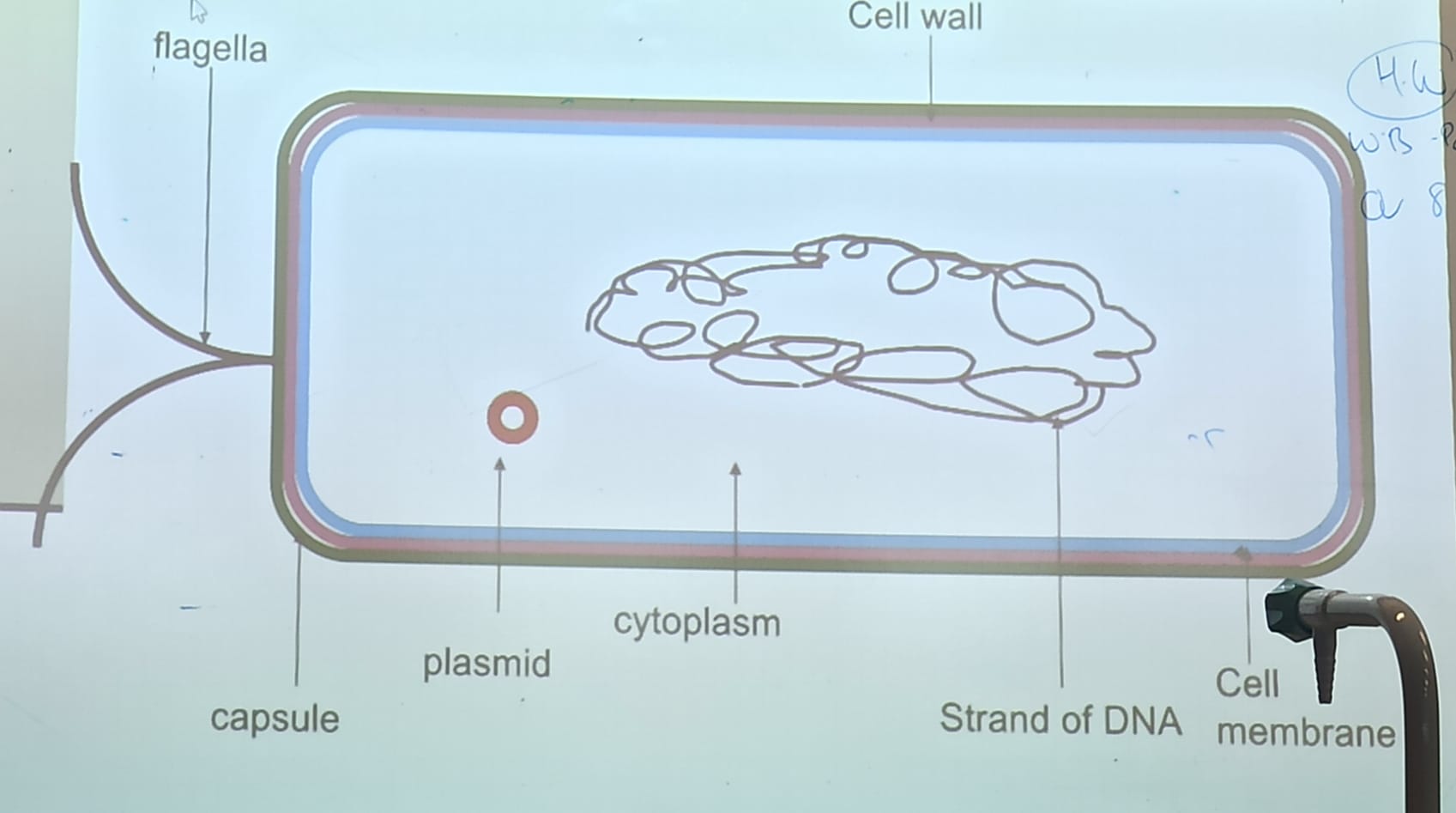
- Bacteria reproduce asexually
- The method used by a bacteria to reproduce is called Binary Fission
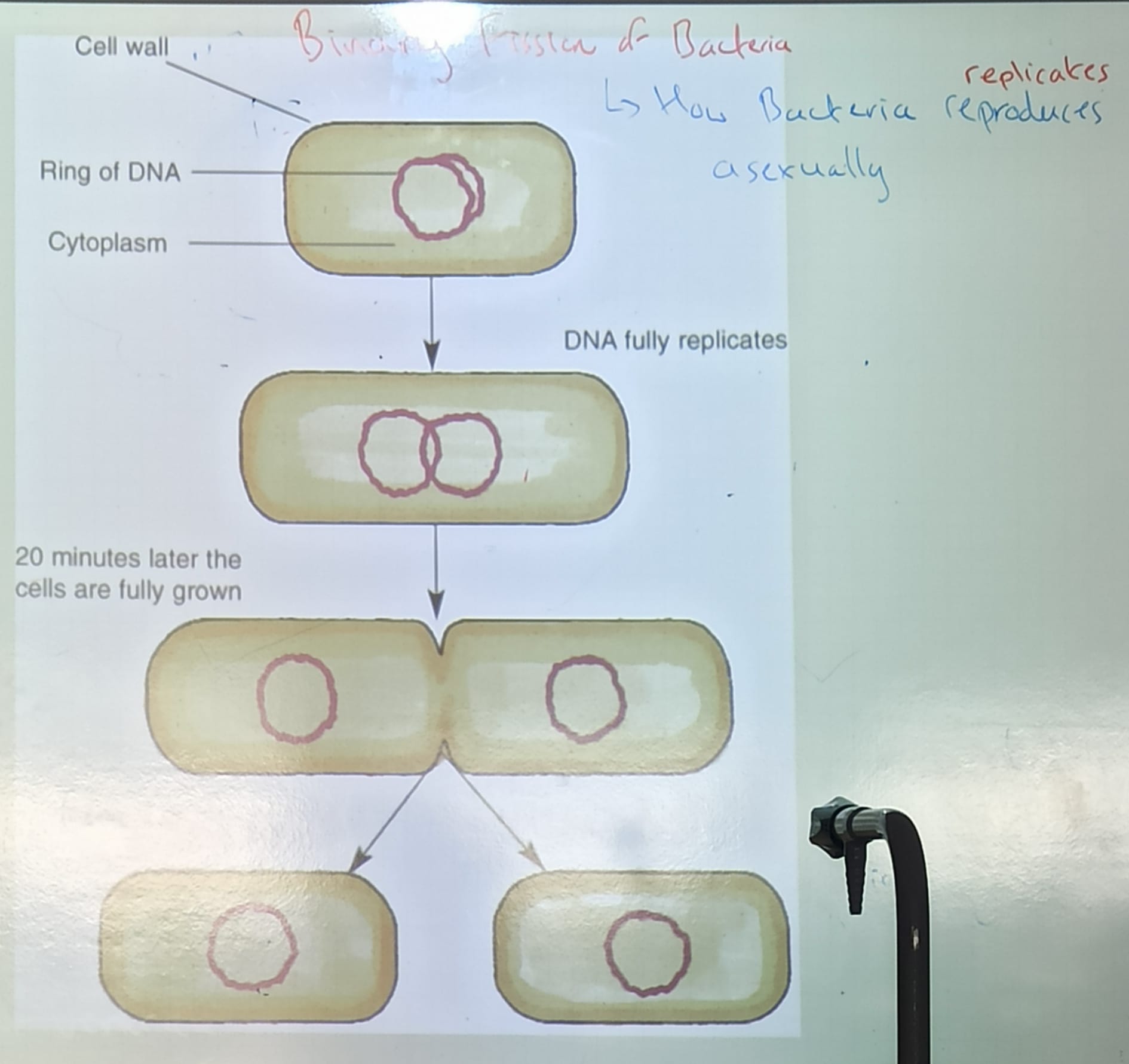
- Mutations give rise to new bacteria and this allows bacteria to evolve resistance
- Some bacteria can withstand unfavourable conditions by producing endospores
- These are formed when the bacterial chromosome replicates
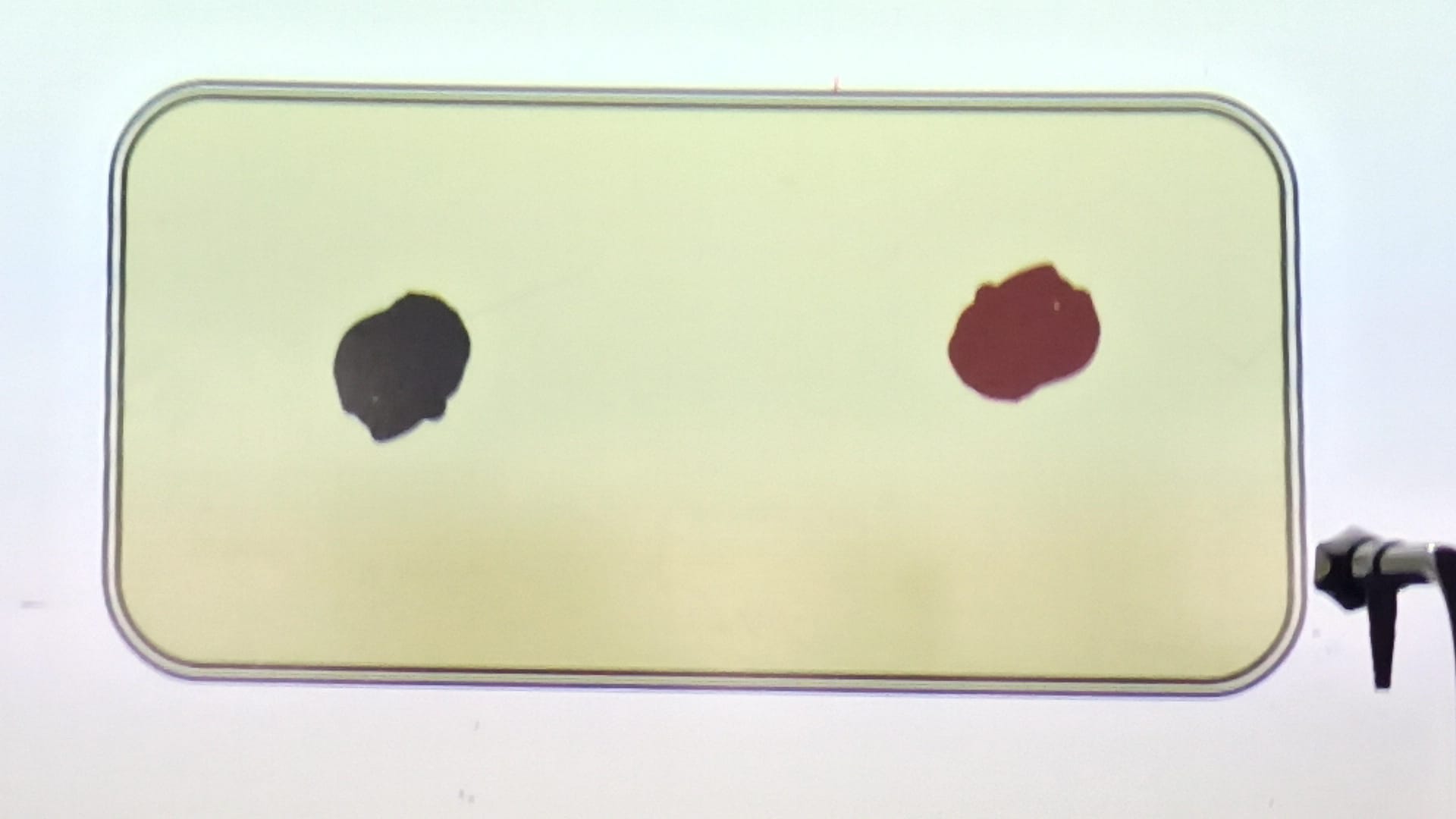
- One of the new strands becomes enclosed in a tough-walled capsule called an endospore
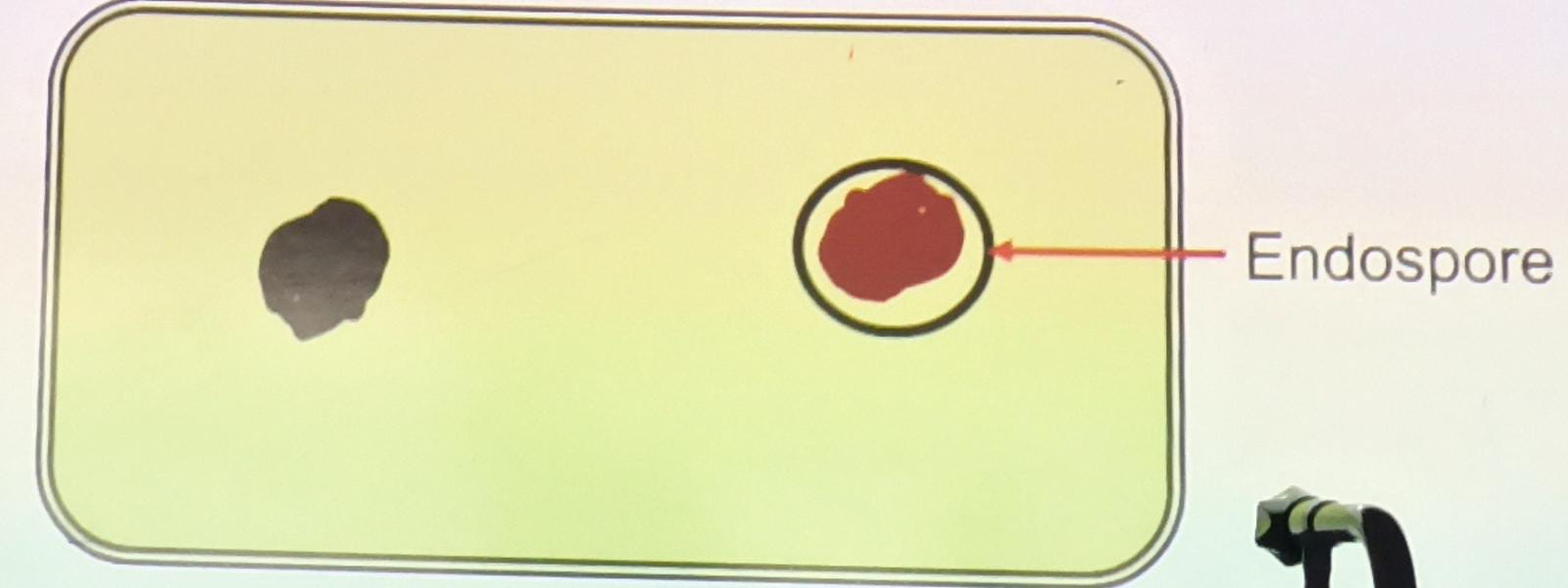
- The parent cell then breaks down and the endospore remains dormant
- When conditions are favourable the spores absorb water, break their walls and reproduce by binary fission
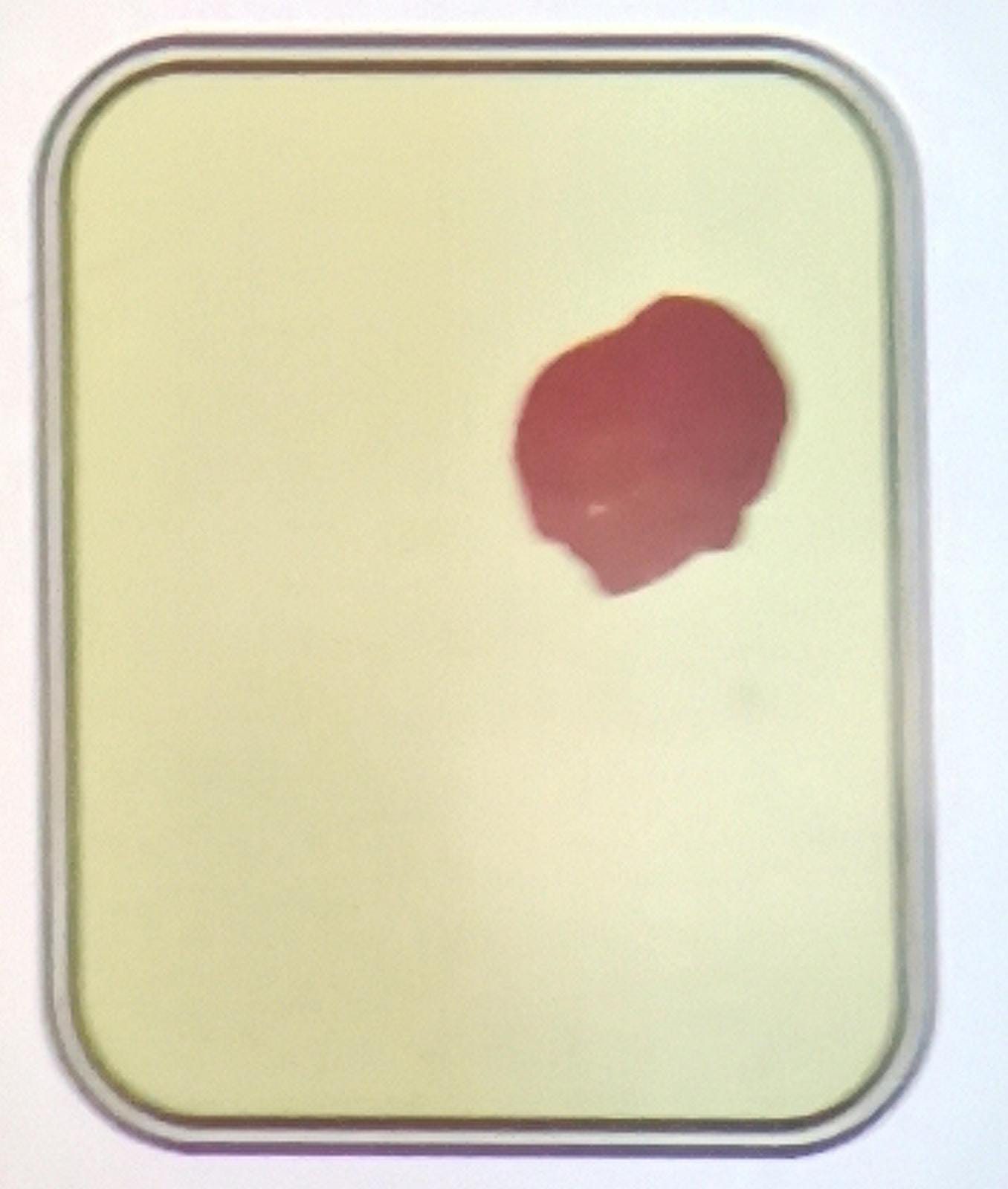
- 4 Ways that bacteria get food
- Photosynthetic bacteria: Use light energy to make food
- E.g. purple sulphur bacteria
- Chemosynthetic bacteria: Use energy from chemical reactions to make food
- E.g. Nitrifying bacteria that convert ammonia to nitrates in the nitrogen cycle
- Saprophytes: Live off dead organic matter
- E.g. bacteria of decay in the soil
- Parasites: Take food from live host
- Some causes diseases
- E.g. Bacillus anthracis
- Causes anthrax
- Photosynthetic bacteria: Use light energy to make food
- Autotrophic - organisms which make their own food
- E.g. Plants
- Heterotrophic - organisms which take in food made by other organisms
- E.g. Humans
- 5 factors affecting growth of bacteria
- Temperature (20°C - 30°C)
- Oxygen Concentration
- pH (Acidic/Basic)
- External Solute Concentration
- Pressure
- Two Economic Benefits of Bacteria
- Bacteria such as Lactobacillus are used to convert milk to products such as cheese and yoghurt
- Genetically modified bacteria e.g. E. Coli are used to make products such as Insulin, enzymes, drugs, food flavourings and vitamins
- Two Economic Disadvantages of Bacteria
- Bacteria can cause food spoilage
- Pathogenic Bacteria can cause diseases in humans and animals
- Examples:
- Tuberculosis
- Anthrax
- Thyphoid
- Pathogens are micro-organisms that cause disease
- Examples:
- Anthrax
- Thyphoid
- Examples:
- Antibiotics are produced by micro-organisms that stop the growth of, or kill, other micro-organisms without damaging human tissue
-
Antibiotics can be used to control bacterial and fungal infections but do not effect viruses
- Mutations in bacterial genes can allow bacteria to develop antibiotic resistance
- Bacterial strains have emerged which are resistant to almost all known antibiotics (multi-resistant)
- As a result present day antibiotics become ineffective.
- E.g. MRSA - Type of bacteria resistant to most forms of antibiotics (Super Bug)
- Overuse of antibiotics
- This results in the increased growth of antibiotic resistant bacteria
- Failure of some patients to complete a course of antibiotics prescribed to them by a doctor allows the bacteria to survive and re-grow
- Bioprocessing is when we use living things cells or their parts to make useful products
- E.g. Making Insulin (using bacteria)
-
A bioreactor is a vessel in which bioprocessing happens
- A Growth Curve of a Microbial Culture
-
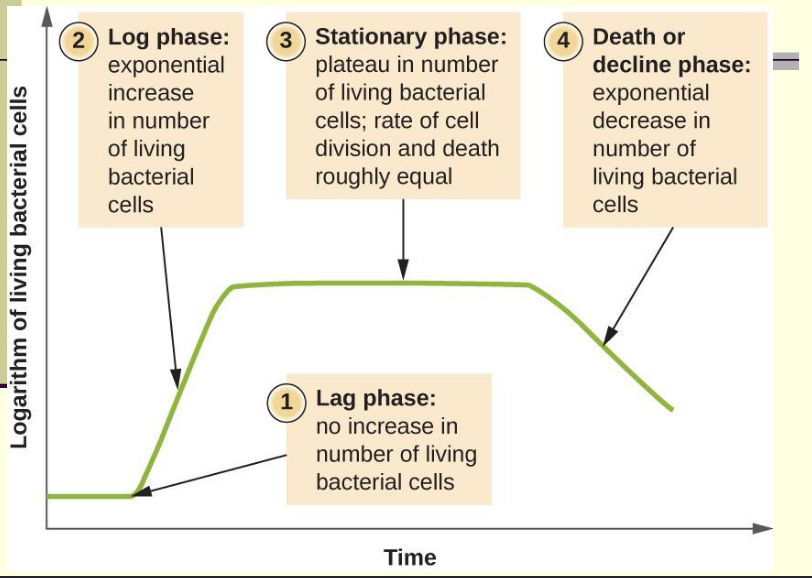
- Batch Processing is when a fixed amount of nutrient medium is added to the bioreactor and all the stages of the bacteria growth curve happen
- Then the process starts again
- E.g. Making antibiotics
- In Continuous Flow nutrients are continuously being added and wastes removed to ensure that it is is always in the log phase
- E.g. Alcohol Brewing
- Bacteria are prokaryotic because they don’t have a true nucleus or membrane bound organelles
Protista (Amoeba)
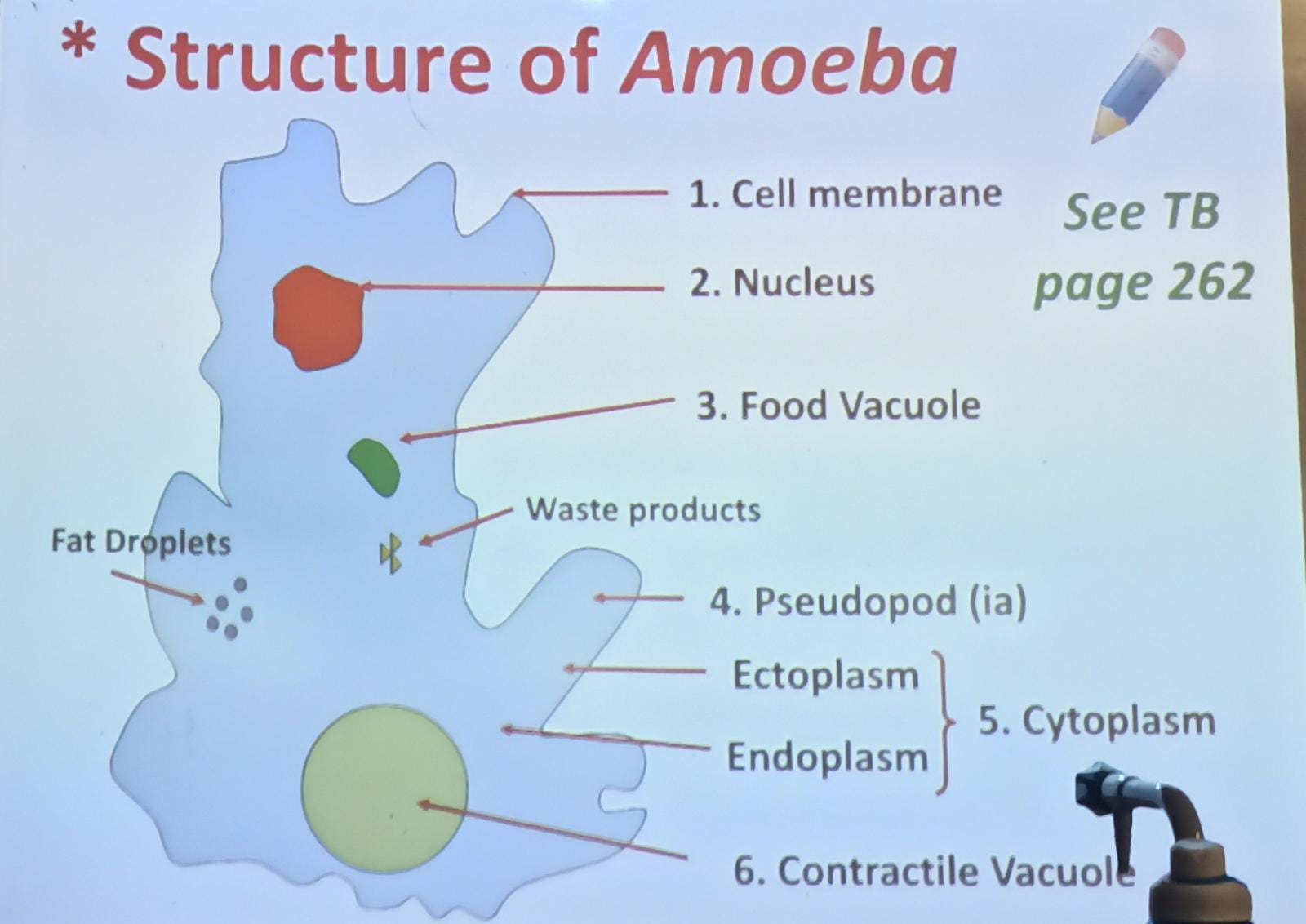
- Examples:
- Unicellular = Amoeba
- Multicellular = Algae (seaweed)
- How an Amoeba osmoregulates
- Water enters the cell by osmosis and excess water is collected in the contractile vacuole
- Vacuole swells and touches the cell membrane
- It bursts and expels the water
- The functions of the following parts of an Amoeba
- Food vacuole: Releases enzymes to digest and absorb food/prey
- Contractile vacuole: Maintains salt and water balance in the cell by the process called osmoregulation
- Psuedopods (False Feet): Help amoeba to move by extending in different directions and engulf (“Amoeba Hug”) prey
- Cell Membrane: Holds in cell contents and allows gas exchange
Fungi
-
Fungi are mostly multicellular structures which reproduce by spores
- Parasitic fungi are organisms that lives in/on another organism causing harm
-
Saprophytic fungi get nutrients from dead materials
- Obligate parasite has to live in or on another organism to cause it harm
-
Facultative parasite may use parasitic activity but doesn’t rely on it
- Edible fungi are safe to eat
- Poisonous fungi are not safe to eat (Potentially Deadly)
Rhizopus
A diagram of a Rhizopus (Bread Mould)
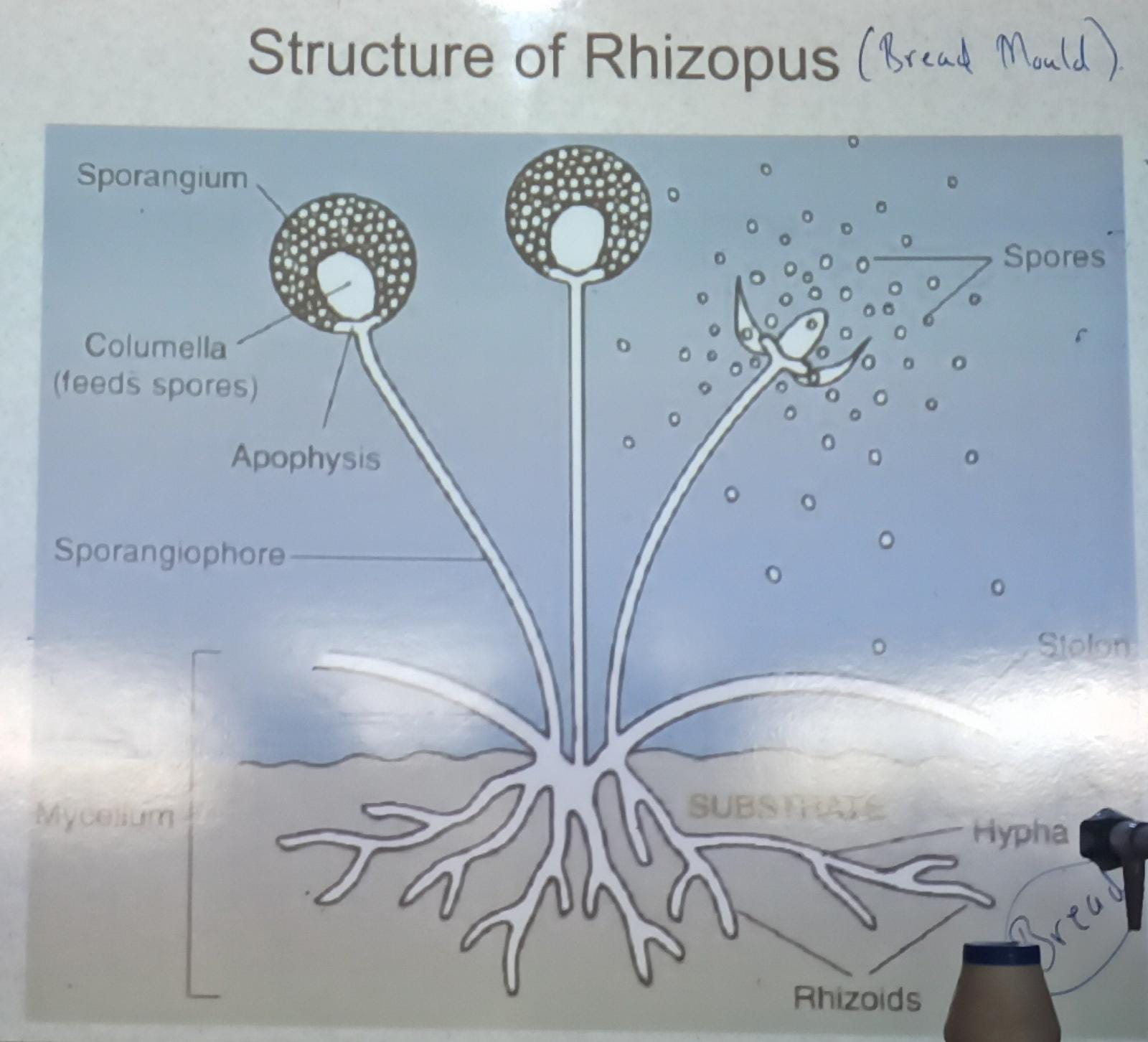
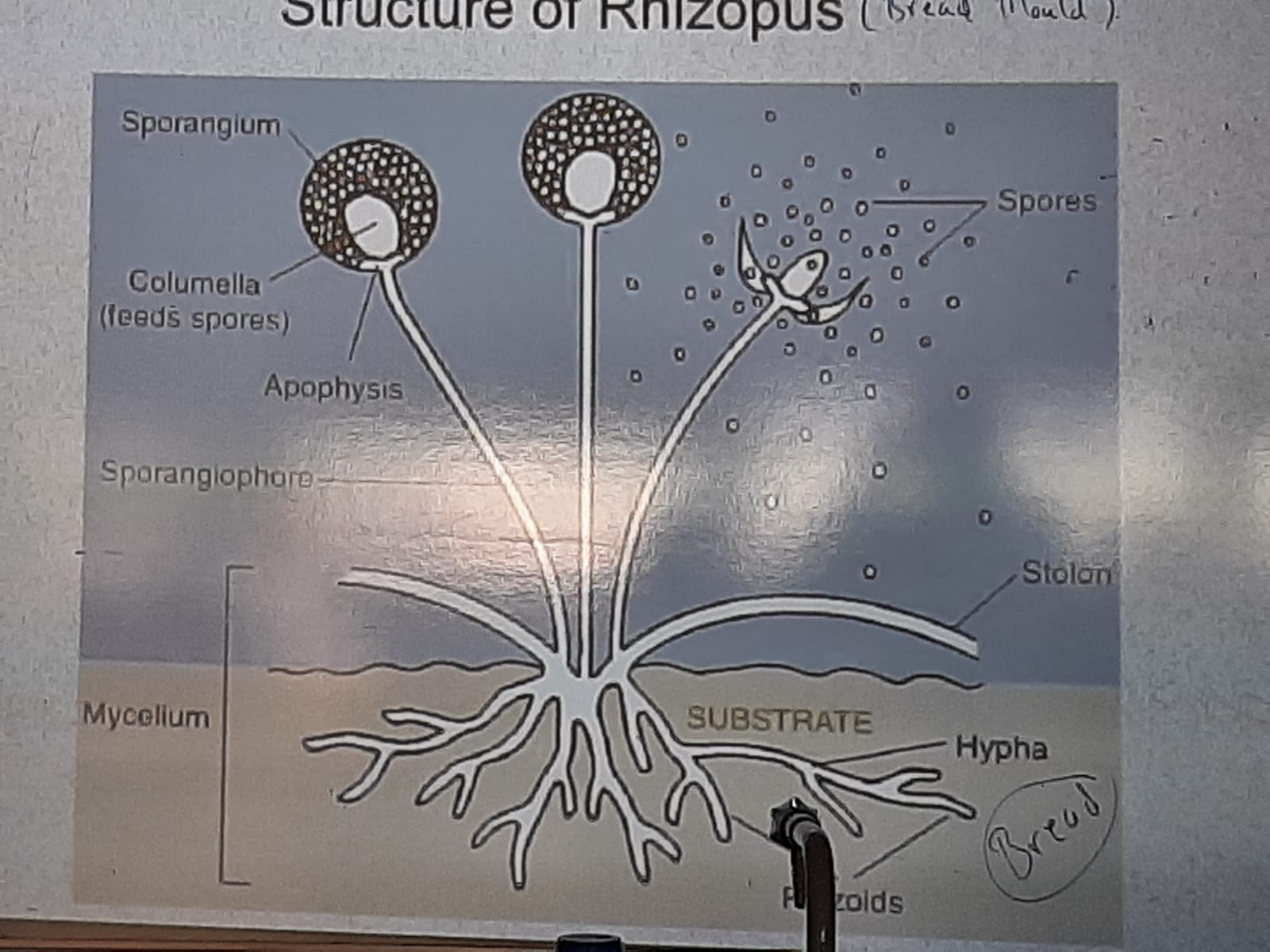
Rhizopus Nutrition (Saprophytic)
- The hyphae digest the substrate on which they grows
- Rhizoids provide extra surface area for absorption of the digested material
- Stolons are arial hyphae which allow Rhizopus to spread sideways
Rhizopus Asexual Reproduction (Main Method of Reproduction)

- Some hyphae grow up vertically from the substrate and form a sporangium
- Mitosis (grows) occurs
- Each cell develops a resistant wall and is now called a spore
- In dry conditions the sporangium dires out and bursts, releasing spores
- If spores land on a suitable substrate, they will germinate
- A new mycelium will form
Rhizopus Sexual Reproduction (Only Under Harsh Conditions like Lack of Water - Method of Survival)
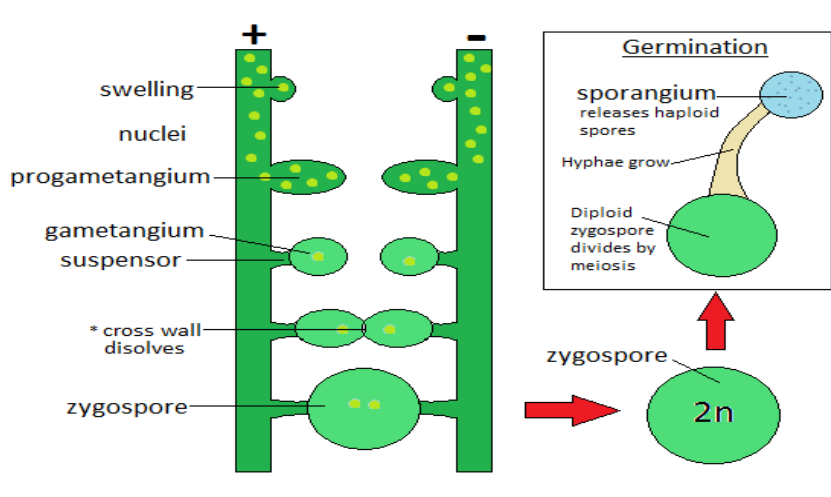
- + and - strains grow close together
- Swellings form along the length of the hyphae and touch
- Nuclei move into each swelling, now know as progametangia
- Cross-walls form to produce gametangia
- The wall between the gametangia breaks down
- Fertilisation occurs when two nuclei fuse. Many diploid nuclei form
- A tough, resistant outer wall forms around the old gametangia forming a zygospore (2n)
- The parent hyphae die away and the zygospores are released
Yeast
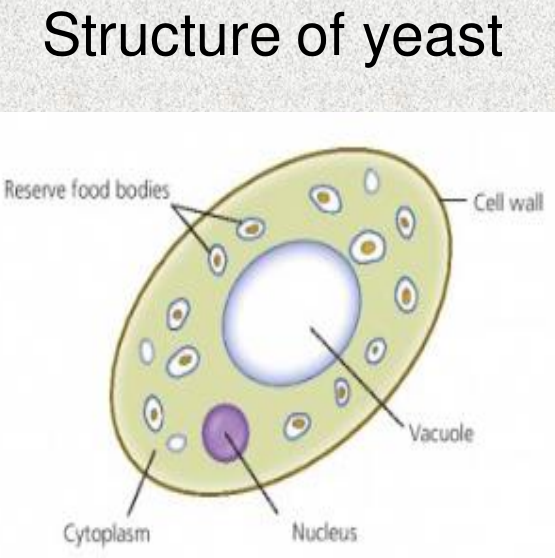
Asexual Reproduction in Yeast (Main Method - also know a budding)
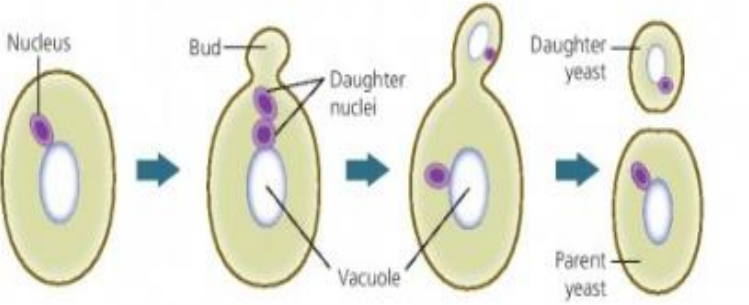
- In favourable conditions, a small extension (bud) forms on the cell
- The bud enlarges and fills with cytoplasm
- The parent cell nucleus divides by mitosis
- the second nucleus moves into the bud
- The bud will then grow and may separate from the parent cell
- The new cell may remain attached and divide again, forming a colony
Economic Importance of Fungi
Beneficial Fungi
- Yeasts can be used to make bread and alcohols such as wine and beer
- Fungi can be used as a source of food
- e.g. mushroom
Harmful Fungi
- Fungi can attach crops
- e.g. corn and wheat and cause major financial losses as a result
- Fungi such as athletes foot and ringworm can infect animals
- Fungi can spoil food
- e.g. rhizopus grows on bread
Viruses
- Viruses are infectious agents made up of nucleic acid (DNA or RNA) surrounded by a protein coat
- Three main virus shapes:
- Round
- Rod
- Complex in shape
- The basic structure of a virus is:
- Not made of cells
- Outer protein coat called capsid
- Inside capsid is either DNA or RNA
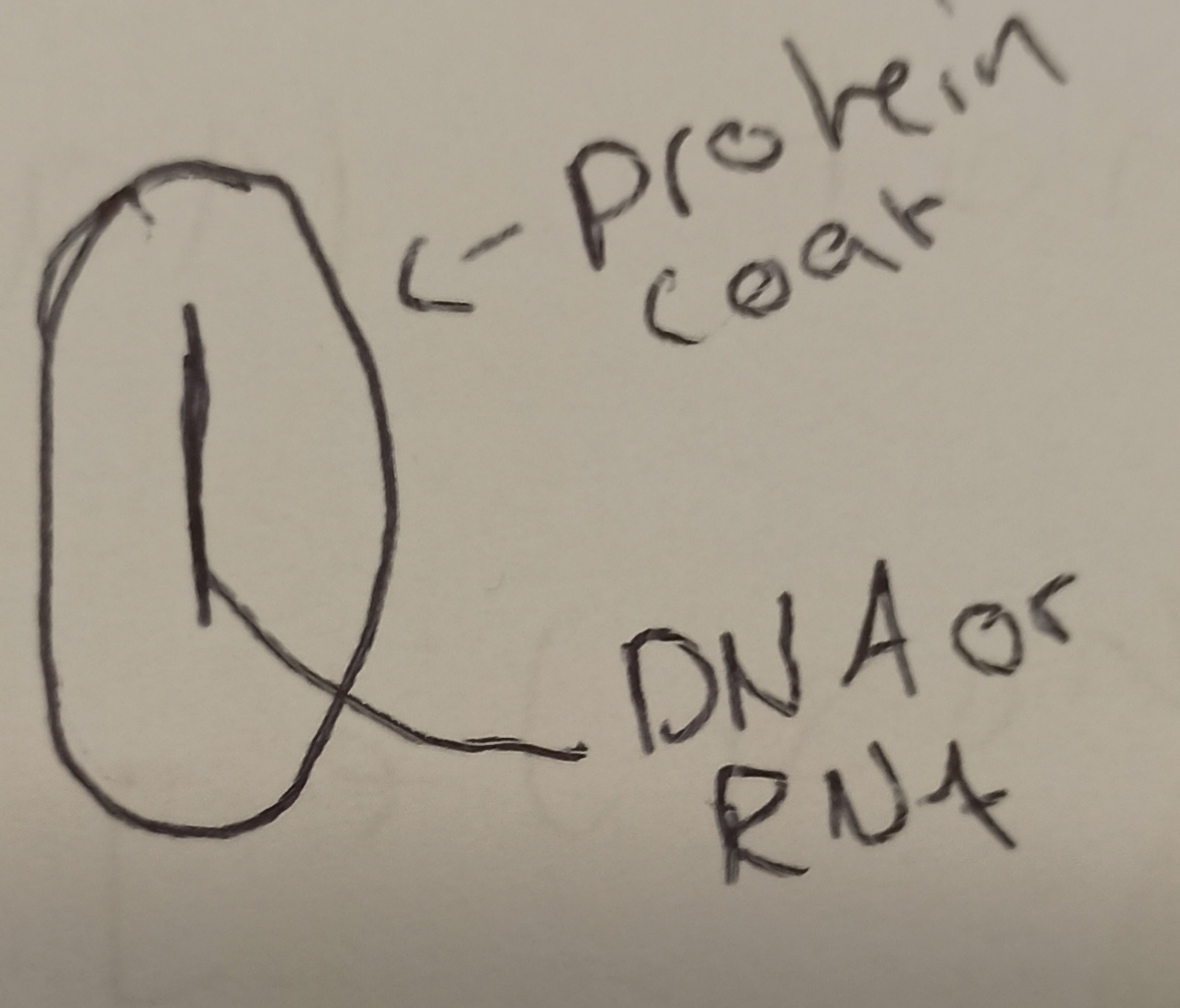
- Virus (Bacteriophage) Reproduction
- Bacteriophage attaches to cell surface
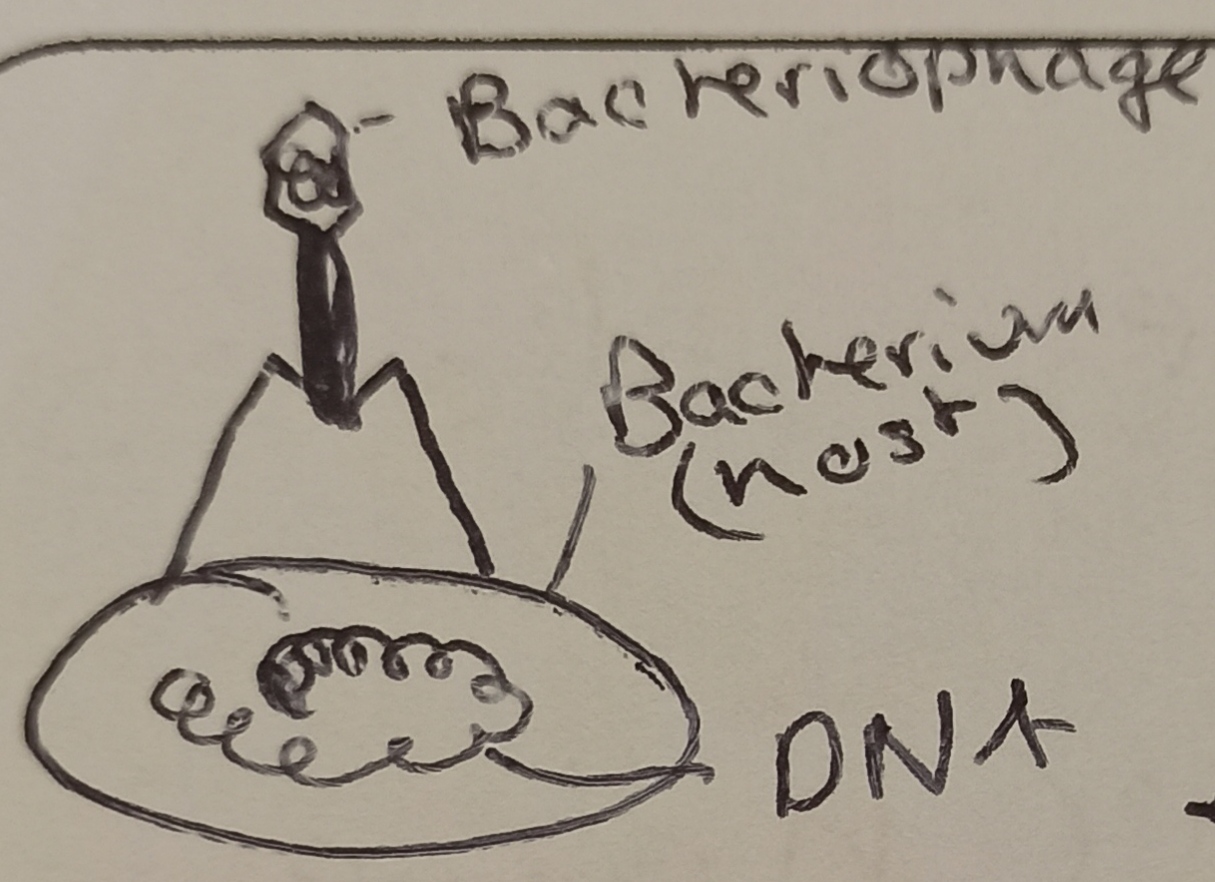 2. It inserts its DNA into the host cell
2. It inserts its DNA into the host cell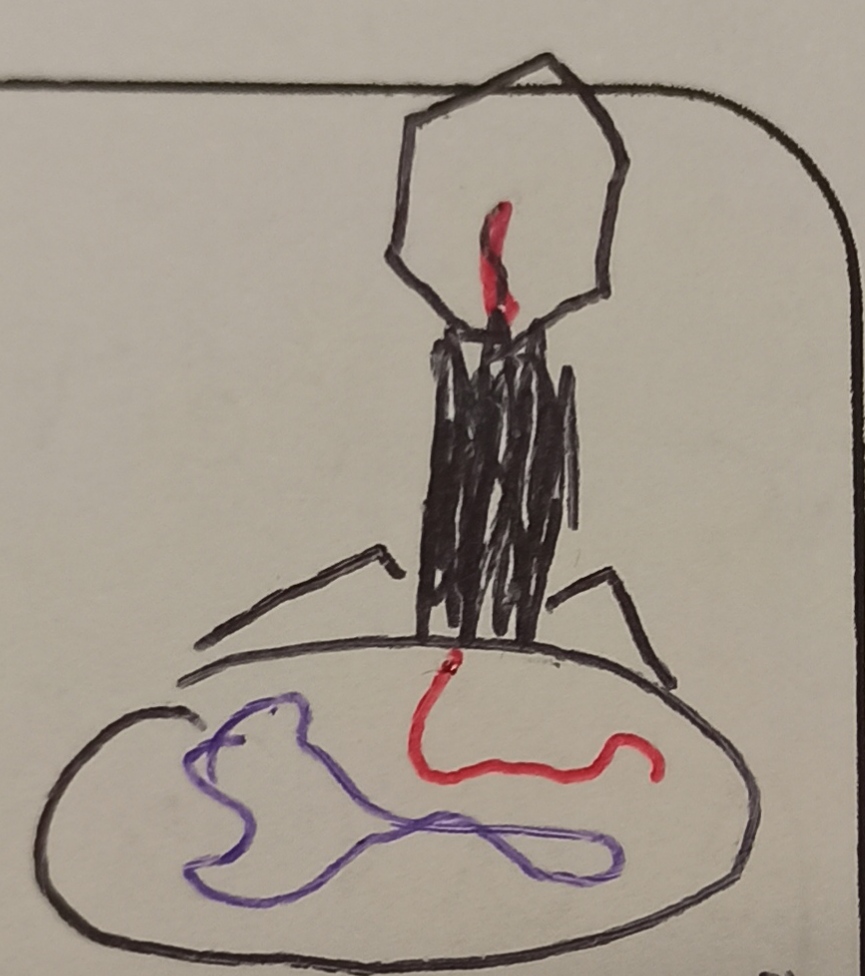 3. Viral enzymes destroy host DNA
3. Viral enzymes destroy host DNA 4. Phases use host cell machinery to make more viral DNA and protein coats
4. Phases use host cell machinery to make more viral DNA and protein coats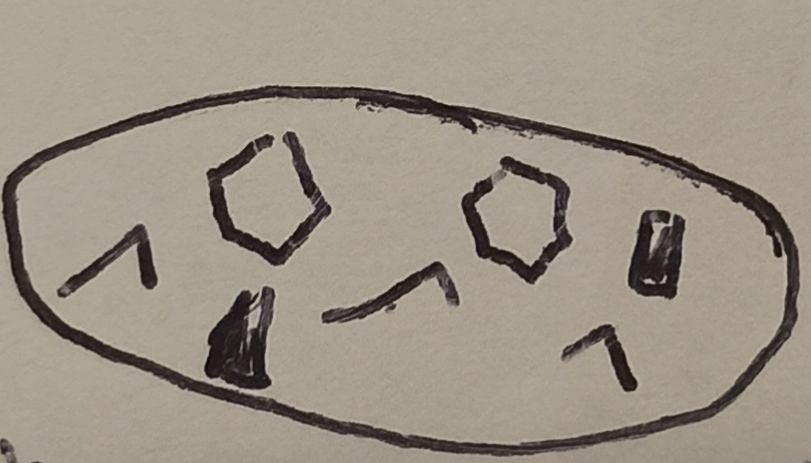 5. New viruses are assembled and burst out of hosts to infect other cells
5. New viruses are assembled and burst out of hosts to infect other cells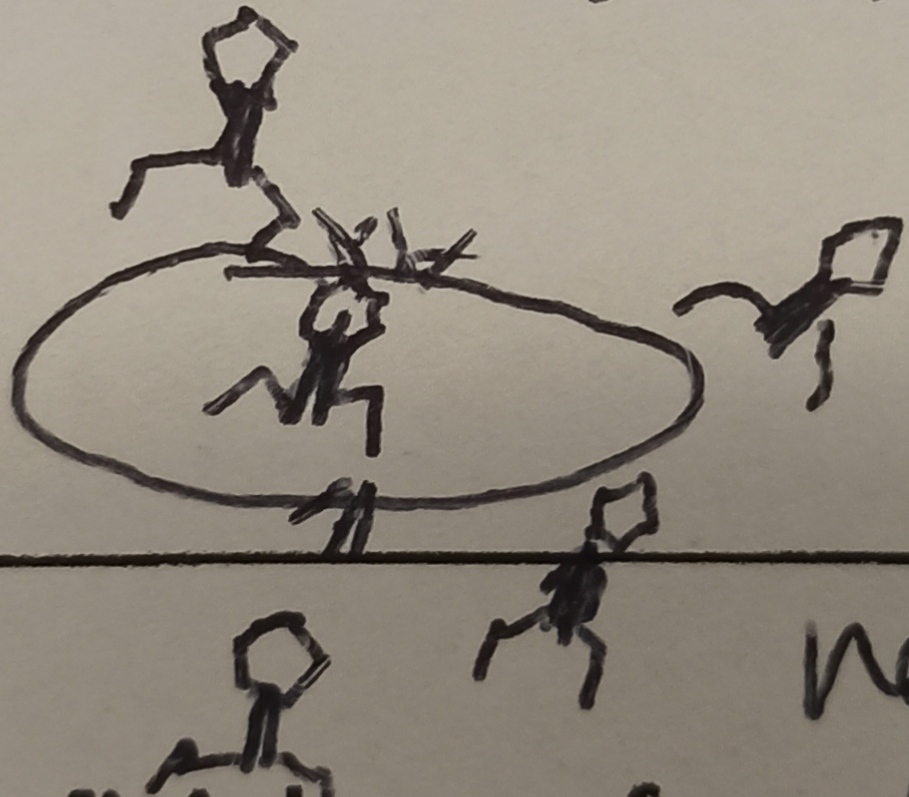
- Three pieces of evidence that suggest that viruses are living:
- Possess genetic material DNA or RNA
- Can replicate
- Have a protein coat
- Four pieces of evidence that suggest that viruses are dead
- Are non cellular
- Cannot reproduce by themselves
- Only have DNA or RNA, not both
- Don’t have mitochondria or chloroplasts
- A bacteriophage is a virus that infects bacteria, but are harmless to humans
- Can kill MRSA bacteria (superbugs)
- Friendly viruses
- The three main virus shapes:
- Round Shaped
- Rod Shaped
- Complex in shape
-
One example of a beneficial use of viruses is genetic engineering, Covid 19 vaccine - genetically modified viruses
- Two examples of where viruses cause harm
- Covid 19
- Cold
- Parasite = Organisms that live in or on another organism causing it harm
- Obligate Parasite = Has to be a parasite (have a host) e.g. virus
- Facultative = Doesn’t have to be a parasite (have a host) e.g. candida
- Pathogenic = disease causing